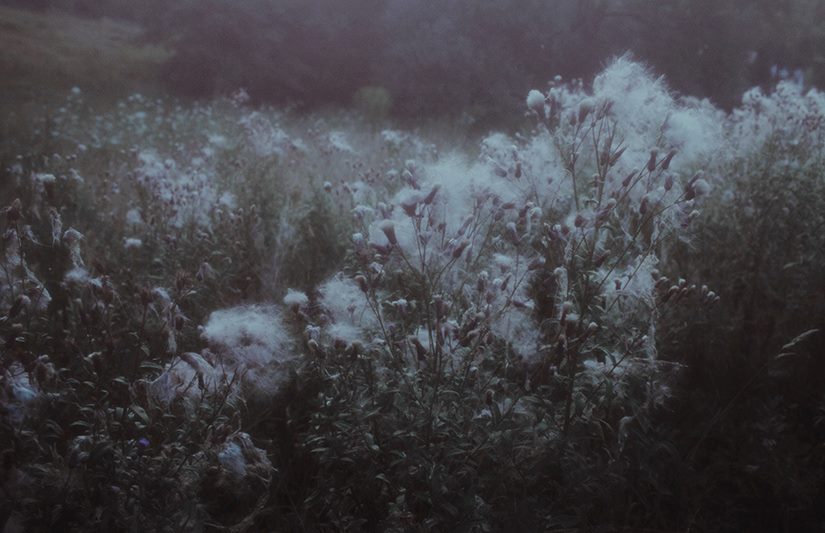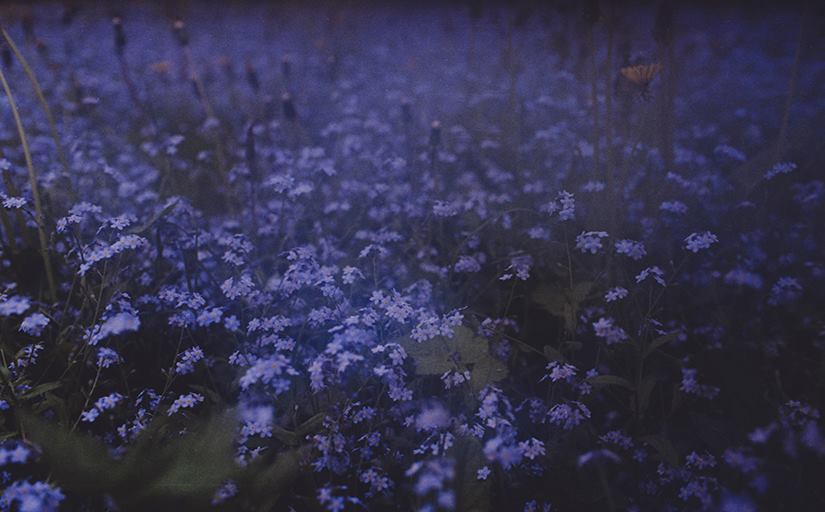An invasive plant has the ability to thrive and spread aggressively outside its natural range. — “What is an Invasive Plant?,” The United States National Arboretum
My convent school in Manila was founded more than seventy years ago by a French-Canadian nun who, like Moses, Joan of Arc, or many schizophrenics, had been given a sign by God to leave Quebec to convert the heathen East. Sister Delia had dreamt that God showed her a field of wheat and on each stalk grew the head of a child. This image was possibly made worse by God’s instructions to harvest the heads.
This is not unusual; I imagine the artist, upon being commissioned to paint the religious dream of a Quebecois woman, fell back on the default iconic imagery of Catholic Philippines: blondes and mestizos. These, after all, are obviously the original occupants of Heaven, although convent schools tirelessly try to increase the diversity of the population there.
I was asked about my baptismal status on my first day of convent school in 1980. I had been freshly removed from another kindergarten for disciplinary problems, and I treated this second round of first-day chaos of crying children and exasperated parents and maids with the world-weariness of a gimlet-eyed mercenary.
We came across a nun during the tour, who kindly asked me if I had been baptized before.
I said, “Huh?”
The nun concluded with “If you aren’t baptized, you won’t get into Heaven. You’ll go to Hell when you die.”
I was perturbed by this, although I wasn’t quite sure where Hell was, but obviously, people who didn’t bathe went there. If I got baptized, I could be saved, but what about my Buddhist parents? My frugal father already timed his showers, I didn’t think he would agree to waste so much water and with an audience watching.
Unfortunately, my parents were less than receptive when I arrived home that afternoon and said, “You’re both going to die and go to Hell.”
My parents were just as bemused, years later, when I announced my atheism at age sixteen.
My mother caught me stealing my passport and discovered the whole plot. I was very soon packed off to a public school in Taiwan, where my mother was born and had grown up.
A naturally aggressive plant may be especially invasive when it is introduced to a new habitat. — “What is an Invasive Plant?,” The United States National Arboretum
Taiwan is my mother’s native country in a way that not many Taiwanese can claim. My grandmother has aboriginal blood, and most Taiwanese are ethnically Han Chinese—the ones responsible for the spread of Chinese food around the world—who fled to Taiwan mostly during the 20th century.
My grandmother only speaks Taiwanese; she knows nothing of aboriginal customs and traditions. The only link we have left with our aboriginal identity is literally in our bones, in the shape of our jaw, the jut of our cheekbones. These were things that couldn’t be erased, although in each following generation, our features are tamed, smoothed down, civilized.
The public school I attended intermittently in Taiwan had once been an abandoned mission. By the time I arrived, it had been converted into a safely Confucian, mildly-socialist school where we were taught to be patriotic Taiwanese fighting against the oppression of Communist China, the place where they ate babies and didn’t have education.
In keeping with the school’s vague militarism, punctuality was seen as an unquestionable must. We were given one hard smack in the face with a Bible for each minute we were late to school. Seconds were rounded up to the next minute. It was a very unpleasant way to begin the day, although a lot of the agony came from watching the principal choose from among a stack of Bibles, each book increasingly better in quality and thus more able to cause pain.
If you can imagine, from out of nowhere, a group of Westerners—people from a race you’ve never seen before—show up holding a stick to which a naked, emaciated dead man is nailed. And these odd-looking strangers with their odd-sounding accents tell these hardscrabble farmers that they ought to worship this malnourished figure of suffering. As my friend Sean once said incredulously, “Do you see our Buddha? He’s happy and fat!”
The missionaries didn’t stay beyond a year when their supplies and money ran out. My mother said, “The missionaries told us they would give a bag of rice to anyone who would become a Christian. So we all lined up and put our hands together and got a bag of rice each and never went back.”
Nowadays, there are more Christians in Taiwan, perhaps because missionaries have realized that one must appeal to Chinese practicality to succeed, although this still often backfires. When my parents moved to the Philippines, my mother thought it prudent to take advantage of free Bible-study classes to learn English. She was irate when she found out that words like “Thee” and “Thou” were no longer in common use.
[Some plants] do not even become invasive until they are neglected for a long time. Invasive plants are not all equally invasive. Some only colonize small areas and do not do so aggressively. Others may spread and come to dominate large areas in just a few years. — “What is an Invasive Plant?,” The United States National Arboretum
I shuttled back and forth between convent school in Manila and public school in Taiwan as I grew up. Perhaps it seems strange that my parents, who obviously had very little knowledge of Judeo-Christian religions, would send me to a convent school. However, the badly-run, barely-funded local schools are simply out of the question for most Southeast Asian Chinese, just as they are out of the question for the locals who can afford private schools.
Some people are proud to reject their Asian identity in this way. The only Asian feature about them is their face, and some further try to change that with plastic surgery or by producing children with Westerners.
To many Chinese families, that rejection is more terrifying than Catholicism. After all, we’ve always made room for Christian gods in our temples, where Jesus mutely extends a hand of peace to Guan Gong, the ruddy-faced God of War who watches over gangsters and police.
My school was considered an Anglo-Chinese school, and most of the students were ethnic Chinese. The curriculum was taught in English but we also took lessons in Mandarin Chinese and Filipino. It does seem like a happy, multicultural way of educating children, but we were simply being armed for war with a broken shield, a rusty sword, and one shoe.
We were cultural mercenaries. We had no loyalties, no cause, we fought on either side depending on the circumstances. We were our own company, and to this day, all these years later, I can still recognize the traces of my convent school in the girls who attended it.
Many invasive plants continue to be admired by gardeners who may not be aware of their weedy nature. Others are recognized as weeds but property owners fail to do their part in preventing their spread. — “What is an Invasive Plant?,” The United States National Arboretum
Perhaps it’s wrong to claim that convent schoolgirls are cultural mercenaries when we are more like a segregated platoon. Convent schoolgirls are part of the landscape now in Southeast Asia, a cultivar of foreign origin that has adapted so well that it’s become an unremarkable part of the ecosystem, like poverty and corruption.
The colonizers brought beautiful things. They brought the dreams of Western children. They brought the promise of salvation. Chinese people brought a cuisine that made every animal edible.
My mobile childhood meant that I was a halfhearted weed, unable to put down roots in any place for too long. I wish I could say that this enhanced outsider status gave me a National Geographic insight into my environment, but I was just as blind as anyone else. I knew all about colonization from an early age. We studied it in Social Science class, but it never occurred to me that I was an invaded landscape myself.
I was at a quiet church in a town that had been built very early during the three-hundred year Spanish colonial period. I was on a field trip with a Spanish teacher, a gay mestizo who nursed Marxism in his heart if not in his style of dress.
He pointed to the frescoes and said, “Mírelo.”
He said, “What do you see?”
And then I realized what he meant. We were here in a church built and painted by brown hands, surrounded by Spanish angels and Filipino devils, standing underneath the calm statues of the Virgin Mary, Jesus, and sundry saints with the hazel eyes and pointy nose of my teacher. The traces of history were marked on his face as clearly as they were on mine.


